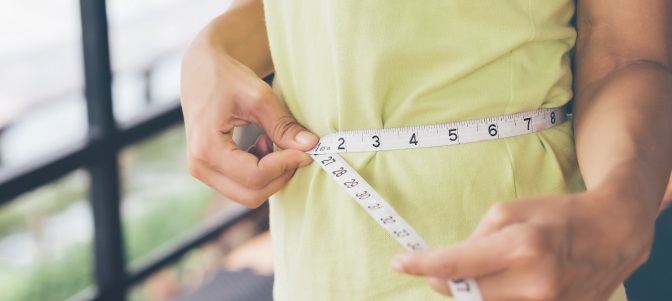Waist size predicts heart attacks better than BMI, especially in women
By American Heart Association News

Women with bigger waists relative to their hips face a higher risk of heart attacks than men with a similar body shape, according to a new study.
The study, published Wednesday in the Journal of the American Heart Association, suggests that a waist-to-hip ratio measurement may be a better indicator of heart attack risk than body mass index for both men and women.
Previous studies have shown it's not just general obesity, but also where fat is stored on the body, that contributes to an increased risk of heart disease. However, past research was unclear on what role gender played in the equation, despite clear differences between men and women in body fat distribution.
For this study, researchers looked for sex-specific links between excess weight, fat distribution, and heart disease risk in nearly half a million men and women ages 40 to 69 in the United Kingdom who had no previous history of heart disease. During seven years of follow-up, 5,710 heart attacks were recorded among participants, with women experiencing a 15 percent higher risk of heart attacks than men with a similar waist-to-hip fat distribution.
"We found that women with bigger waists and waist-to-hip ratios face a greater excess risk of experiencing a heart attack than men who have a similar 'apple shape,'" said the study's lead author Sanne Peters, a researcher at the George Institute for Global Health at the University of Oxford in the United Kingdom.
On average, waist circumference among all participants was about 33 1/2 inches in women and about 38 1/4 inch in men. Women with a waist size greater than 35 inches and men with a waist larger than 40 inches are at higher risk for heart disease and Type 2 diabetes, according to the National Heart, Lung, and Blood Institute.
"More intensive screening for the risk and development of cardiovascular disease and diabetes in individuals with an apple shape might help prevent the onset of disease, especially in women," Peters said.
Dr. Goutham Rao, chair of family medicine and community health at the University Hospitals Cleveland Medical Center, said the study provided new context for how patients and doctors can battle heart disease.
"We know now that women have to be especially careful," said Rao, lead author of a 2015 scientific statement from the American Heart Association that recommends adults have both their waist circumference and BMI measured each year. "We already knew having a big waist was a risk factor for the general population, but what's interesting about the study is that women were especially affected by that specific risk."
The study also suggests that measuring waistline size and comparing it to hip size might be a better way to predict heart disease risk than the widely used body mass index, which calculates body fat based on height and weight.
"BMI is a measure of general obesity, and it does not discriminate between fat around the hips or the waist," Peters said. "Yet, compared to fat around the hips, fat around the waist is more metabolically active, is closely related to insulin resistance, and may be more strongly associated with the risk of heart disease, stroke and diabetes.
"Measures of body fat distribution, including waist circumference, waist-to-hip ratio and waist-to-height ratio, may be more suitable as indicators for cardiovascular disease risk," she said.
Rao – who was not involved in the study – agreed, and called for doctors to aggressively seek out "respectful ways to overcome the sensitivity" of measuring patients' waistlines. Those methods, he said, include doing the measurements in private rooms or letting patients measure their own waistlines with inexpensive digital measuring tapes.
Rao said, "I think this study points to BMI as a flawed measure and offers evidence that we ought to be measuring waist circumference systematically in all of our adult patients at least once a year – not just because it shows certain people they are at high risk, but it might also identify folks that are not at high risk."
Peters said more research is now needed into the different ways women and men store body fat and how that affects overall health. Rao called for additional research into how waist circumference affects stroke risk, and how it impacts various racial and ethnic groups.
In the meantime, Rao said the study reinforces the need for both men and women to decrease excess belly fat with a two-pronged approach of proper nutrition and regular exercise.
If you have questions or comments about this story, please email [email protected].




